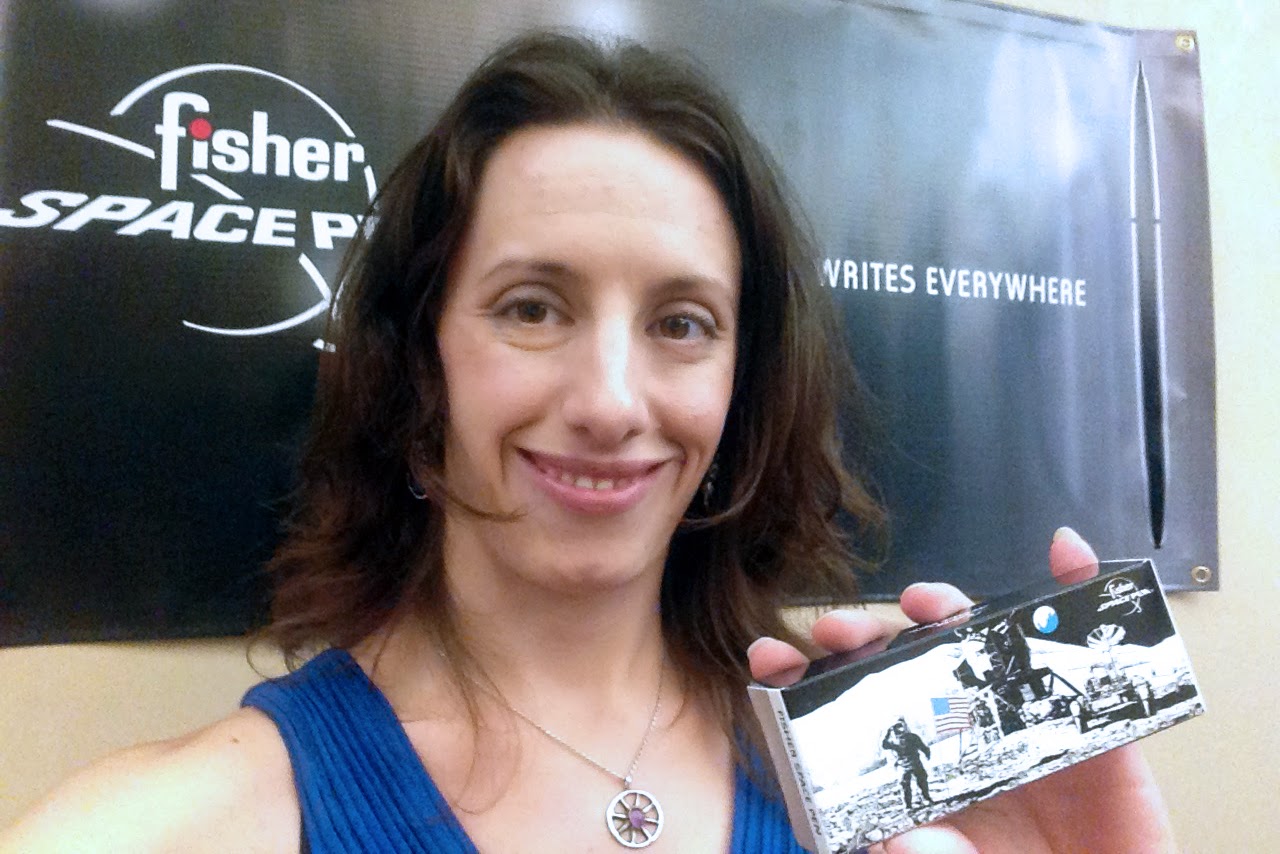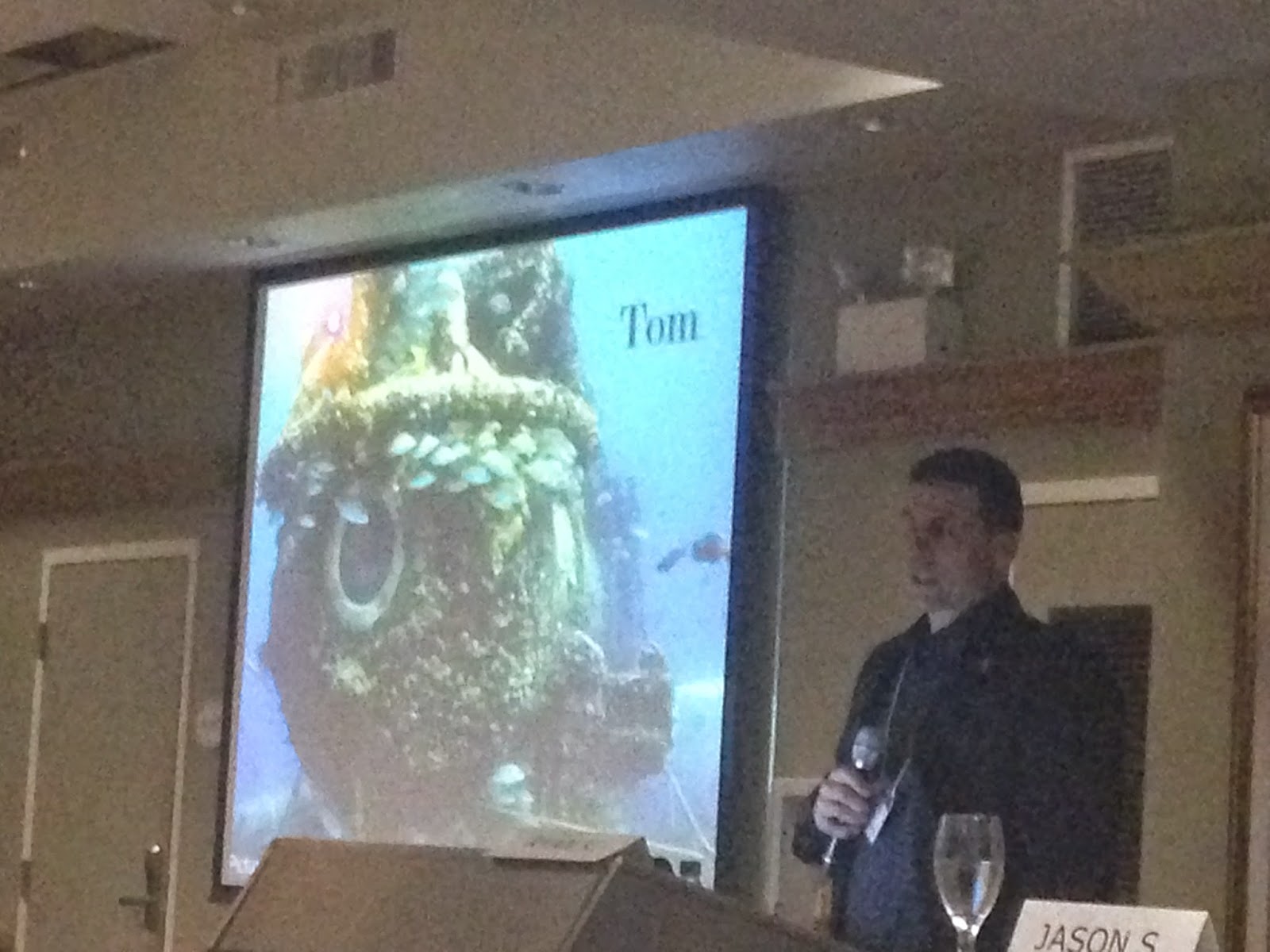The International Space Station orbits
at roughly 400 km / 250 miles above us at a speed of over 17,000
miles per hour. Every so often, SpotTheStation notifies me that I can
view the ISS from my location at night. Depending on my schedule and
whether or not I've forgotten, I catch the ISS passes about a third
of the time.
Friday night after Good Friday
celebrations, my husband and I paused in the church parking lot to
watch the space station pass by overhead. I'm always amazed at how
fast it travels across the sky, though even at that speed, it was
visible for several minutes. It's bright, brighter than I would
expect, and could be mistaken for a moving planet, a non-blinking
plane, or a long-lasting meteoroid. It still amazes me that this
shining little dot is a large space station home to several
astronauts and countless research projects, some of which I helped to
make happen. It's humbling.
Two weeks ago marked two years since my
first day working at the Center for the Advancement of Science in
Space, a small nonprofit whose mission is to facilitate research on
the ISS to benefit life on Earth. At the time, I was seeking a
postdoc or a full-time post-grad school job. I had heard of CASIS
(pronounced cay-sis, not caa-sis) but I hadn't realized that its
headquarters is located on the Space Coast. A colleague informed me
that they were looking to hire scientists and encouraged me to apply.
I was hired on as a Scientific Research Analyst.
One of my primary roles was to study
the research proposals given to us to fly research on the ISS and
evaluate the quality, feasibility, and likelihood of success of the
work. I wish that I had kept track of the number of projects that I
was in some way involved in, probably close to 100 in my year and a
half there! My job was that of a filter, weeding out the less worthy
or too expensive projects in order to find the ones that were most
likely to succeed. For most of the projects, I interacted with
scientists in various fields across the country to obtain and review
proposals.
For larger areas of interest, I wrote
request for proposals (RFPs) on specific target areas. For individual
projects, any and all science was fair ground for me to assist with,
but my specialty is the physical sciences and especially remote
sensing due to my astronomy background. My RFPs were remote sensing
or Earth observation related. For those RFPs, I helped organize and
run science review panels with experts in the field from around the
country. I also worked with a scientific advisory board to help
advise us on which scientific areas we should focus on.
This was a new role for me in that I
got a huge amount of experience learning how proposals should be
written by evaluating them. By reading and comparing poor proposals
with excellent proposals, I now have a pretty good idea of what makes
for a more successful proposal. For example, a poor proposal ignores
instructions and guidelines, is not proofread or edited, reads more
like a marketing document than a scientific paper, and makes claims
without supporting evidence. We got a good number of “crackpot
science” or pseudoscience proposals during my time, too, which were
always entertaining.
Contrastingly, a good proposal very
nearly takes the instructions as a template and responds to each
question one by one, clearly outlining the research and explaining
points with scientific justifications and evidence. Evaluations are
based on the answers to questions posed in the instructions.
Paraphrasing here, these are not actual questions, but you get the
point:
Q: What is your project? A: My project
is to do this and this by executing these detailed steps.
Q: Why? A: The scientific justification
for my project is this with these supporting references and examples
and this completed background research.
Q: Why do you need to use the ISS? A:
We need to use the ISS for this undeniable reason to supplement
ground-based research or because we cannot conduct this research on
the ground.
I also had to learn to stand my ground
and fight for my professional opinions when others were also fighting
just as hard for theirs. This meant that I had to be confident about
my scientific analysis and I have enough professional integrity to
stand up for my conclusions, even if I was overruled in the end.
Already a natural networker, I also tried my hand at a bit of
business development, reaching out to scientists and engineers to
inform them of the opportunity to fly their research on ISS. I
supported conferences and workshops where I met with researchers
wanting to use the ISS for their research.
An important point that I had to repeat
over and over was the difference between CASIS and NASA. Firstly,
NASA's ISS office is the big cheese and has way more resources. In a
way, CASIS is a contractor for NASA with the flexibility and
creativity to try to take a little budget and make a big bang.
Another main difference is that the focus of the research that CASIS
supports is research done on the ISS or to support research done on
the ISS to benefit life on Earth. Every project awarded had to have a
direct application to benefit humanity on Earth.
I can't talk about a lot of the
projects I worked on, but I can mention these favorites that were
awarded and published that I personally assisted with:
- An Earth observation project to study
harmful algal blooms (red tide)
- A project to improve metal alloy
creation used in golf products
- A study using the microgrid power
system on the ISS to improve microgrids in remote areas on Earth
- The testing of a new imaging technology
called charge injection devices similar to CCDs
- An Earth observation project to study
minerals in playas
- An Earth observation project to study
how carbon emissions in vegetation change due to stress
- An Earth observation project to study
water quality in the Great Lakes
- A project to fly flatworms to study
regeneration of tissue in microgravity
- An improvement to the maritime vessel
tracking system detecting ship transponders
- A technology demonstration project to
return small payloads to Earth from the ISS
- A technology demonstration project to
assemble small satellite modules in space
- An Earth observation project to study
tropical cyclones (hurricanes)
If you're interested, CASIS is hiring!
I no longer work there so I can't help you much, but you can learn
more on their website:
http://iss-casis.org/.













































